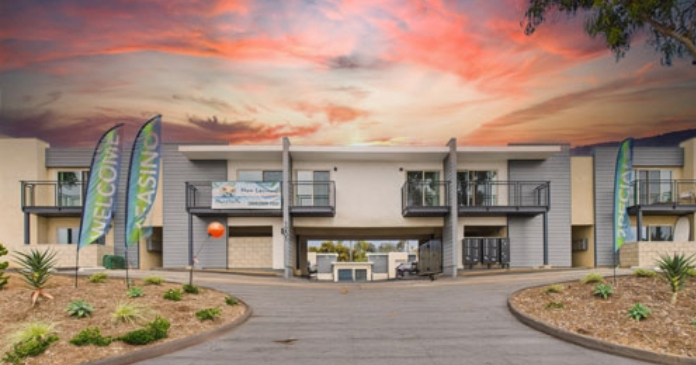Two automated price optimization systems — Revolution LRO and M/PF YieldStar — lead the pack. Other such systems are being used exclusively or are under development. All were created through cooperation between large apartment REITs and long-time creators of revenue management systems.
The beauty of all Web-based revenue management software systems is their ability to identify current market conditions and immediately re-price apartments, time lease expirations to minimize days vacant and help match the right unit and lease term to the right customer. Sounds like a win-win for landlords and residents, right? But several years back, few companies believed the technology that revolutionized the travel and hospitality industries would work for apartments. They were reluctant to buy programs that hadn’t been time-tested in their industry, especially when that industry was mired in a recession. The sector turned a corner toward recovery in mid-2005 and the technology now has a proven track record, convincing many doubters to take a second look.
Equity Residential, which completed installation of LRO across its 165,716-unit portfolio in Q4 2006, found it extremely useful through the turning point in the apartment market. “We’ve raised rents hundreds of dollars in some markets and I don’t think the people onsite, given the way we’d trained them to think about pricing, would have had the courage to push it as aggressively as this program has,” CEO David Neithercut told panelists during a Deustche Bank conference in January. Keith Oden, Camden Property Trust president and COO, agreed. “It’s not in their DNA to raise pricing $150 to $200 per unit on a lease turn,” he said. Camden completed roll-out of YieldStar across its 64,384-unit portfolio in Q4 2005. Both Camden and Equity so far report 1 percent to 2 percent lifts to net operating income that they attribute to the use of YieldStar and LRO, respectively.
Another early concern was entrusting pricing to a dispassionate black box. But it was just that idea — of eliminating the emotion from pricing and applying science and math to the equation — that prompted Archstone-Smith CEO R. Scot Sellers to begin researching new yield management technology eight years ago. “He believed there was a better way of pricing in our industry than the old model, where the pricing authority was effectively your onsite staff,” said Daniel Amedro, the REIT’s chief information officer.
Pioneering LRO
Sellers led Archstone to develop the apartment industry’s first automated yield management system — Lease Rent Options, now called revolution LRO. “Clearly when Scot hired me, the notion that I spent 17 years with Hyatt and had responsibility for the operation of a pricing solution in the hotel industry was appealing to him. Several months after I came aboard, we went to one of these boutique pricing companies that develop pricing models. And not by any coincidence, we went to one of the companies that Hyatt Hotels used. It was Talus Solutions, out of Atlanta,” said Amedro.
Archstone approached Talus in February 1999 to determine if such software could work in the apartment industry. Within four months, Talus had proven, through simulation using real-world data from Archstone, that there was potential and moved on to conduct an engineering study. The study’s success led to a contract between the two companies in early 2000 to build LRO, which was alpha-tested at five Archstone properties between March and June 2001 and rolled out
across the portfolio in November of that year.
“Around that time, Archstone management decided an in-house executive was needed to focus full time on pricing,” said Donald Davidoff, a rocket engineer who formerly headed the team at Talus, which was purchased in 2000 by Manugistics. Davidoff joined Archstone and helped install LRO across the REIT’s high-rise portfolio. Until then, Archstone’s investment in the creation of LRO gave the REIT a perpetual use license.
“In the second half of 2002, at the height of the dot-com bust, Manugistics decided to retrench into some core industry verticals that were critical to them. Multifamily was not one of them,” said Davidoff. Not wanting to be left with orphan software, Archstone acquired the redevelopment and resale rights from Manugistics. “That’s how we got into the business of not just using LRO, but promoting it,” said Davidoff, who marketed the product until the REIT inked a deal with the eight-year-old Rainmaker Group last July.
That agreement gives Rainmaker exclusive rights to market, develop, implement and support LRO and responsibility for Archstone’s current LRO service obligations. Archstone-Smith retains ownership of LRO and all future enhancements developed by Rain-maker. The REIT expects to recognize about $1 million in other income from the arrangement this year. Rain-maker is a group of revenue management experts from other industries, most of whom worked at Talus/Manugistics on the LRO product. Since the agreement with Archstone, Rainmaker has increased its staff by 30 percent and moved to new and expanded offices in Alpharetta, Ga.
YieldStar
Price Optimizer, synonymous with Yield-Star, is a component of the M/ PF YieldStar asset optimization system owned by RealPage, a provider of software and services to around 30 percent of the multifamily market. RealPage is headed by CEO Steve Winn. The YieldStar name comes from a program that was under development in 2000 by Jennifer Nevitt, CEO of Bravo Strategic Marketing, Inc., and later acquired by Camden.
In 2002, RealPage acquired YieldStar from Camden and began cooperatively developing the system into what it is today — an integration of the original YieldStar and a pricing engine built by former Talus/Manugustics director Jeffrey Roper, who had left Manugistics in 2002 to form his own company, RE-Opt, with the sole purpose of developing a revenue management system specifically for the multifamily industry. “By selling the original YieldStar product to RealPage, Camden traded the right to use the Price Optimizer product,” said Camden VP of Business Services Kristy Simonette.
Roper sold RE-Opt to RealPage in 2004 and assumed management responsibility for M/PF Research, an apartment market research firm with 45 years of research and decision support acquired by RealPage in 1999. In 2005, M/PF Research became M/PF YieldStar with Roper as president and Camden began testing Price Optimizer across five communities, rolling the system out across its portfolio by the end of the year. But the installed iteration has little in common with the model Camden sold to RealPage.
“We learned a great deal about multifamily characteristics and amenities from Nevitt’s contribution, but rewrote and simplified the specific functionality,” said Roper. Insights into the leasing process at the site came from Rent Wizard, a program RealPage acquired from AMLI in 2003. “RE-Opt’s Market Response Model — in conjunction with the M/PF Research national markets database — provided the statistically-based elasticity and optimization model,” said Roper. In addition, M/PF Research formed a joint venture with Torto Wheaton Research at MIT in 2003 to utilize Torto Wheaton’s econometric expertise to produce the M/PF-TWR Multi-Housing Outlook, which provides quarterly macroeconomic forecasts for major national markets and sub-markets.
Rent Wizard to Rent Cheque
AMLI began investigating revenue management in 2000 and through 2004 spent approximately $30 million on technology-related activities. “We looked at the YieldStar product that Nevitt sold to Camden and actually invested some money into that initial iteration when she was developing it,” said Steve Small, executive vice president and chief operating officer of AMLI for almost seven years. AMLI also looked at LRO prior to Archstone’s purchase of the product from Manugistics and subsequently brought aboard former Archstone employee, Rich Hughes, who helped write LRO.
AMLI began working with Yield Dynamics in 2003 and together they came up with Rent Wizard, planning to market that revenue optimization model to other apartment companies. “Because we were using the product with RealPage Leasing and Rents as our point-of-sale system, we believed a collaborative relationship with RealPage would give us good integration and help monetize the cost of having a revenue management system,” said Small. AMLI sold Rent Wizard to RealPage, but retained the right to use the system on a self-hosted basis. “One of the things we wanted and part of the reason we went ahead and sold to RealPage — and potentially gave up a competitive advantage — is our view that revenue management is not just a pricing tool,” said Small.
Small said AMLI has taken Rent Wizard, now called Rent Cheque in- house, one step further. “We wanted more control over the analytics and mathematics. We believe we have a better algorithm for finding the prices, but we’re still using RealPage Leasing and Rents to display those prices to our customers. It’s not exactly YieldStar, but it’s not far from it,” he said. He noted AMLI’s robust technology and revenue management platform paid off when Morgan Stanley’s Prime Property Fund purchased the REIT last year for $2.1 billion. “They paid a substantial premium for our technology platform and certainly that was one of the things that initially led to the sale,” said Small.
Profit
AIMCO took a different path, hiring Pricing Revenue Optimization Systems (PROS), a revenue management software company that provides yield management systems to clients that include airlines, hotels and car rental companies. AIMCO Vice President/Pricing and Analysis Lee Montgomery originally met with YieldStar creators when that program was in its formative stages to discuss a revenue management system, but had no interest in participating in a pool of other REITs to develop a product.
“I actually spoke with Donald Davidoff about LRO, but the discussions never got off the ground. We (AIMCO) determined our best avenue would be to develop with PROS because of their expertise. I think Donald has done a tremendous job with LRO and introducing this industry to disciplined revenue management. My hat’s off to him and his team. However, we believe that what we are implementing sets AIMCO up for maximum flexibility via price segmentation with our customer,” said Montgomery.
AIMCO, the first apartment company to engage PROS, started using pricing recommendations from the system the REIT now calls PROFIT in April 2006 and finished training its regional operating center teams last summer. “We upload pricing and review the system recommendations frequently with the regional teams to look for tweaks to the dashboard components,” Montgomery said.
PROS is marketing the system under the name Lease Property Pricing System (LPPS) to large commercial property and apartment companies.
Yielding results
Investing in new technology is a big monetary commitment, and some companies choose to test drive a system before full deployment. A standard LRO pilot program involves monitoring two groups of six to eight similar communities, ideally in the same sub-market, over a period of six months or less. One group sets rates with the software, while a control group of similar properties sets rates as before.
“Each month, the client will measure the ‘revenue billed per unit’ along with other measurements on both the test and the control properties. The difference in the measurements between the two properties is the result of LRO,” said Pat Flanigan, vice president of sales for Rainmaker’s business development efforts.
Simpson Property Company rolled out LRO in mid-2005. During its one-year test period the company saw a differential of income of right around 3.5 percent — from as low as 2 percent to as high as 5 percent — between the properties that had LRO and the ones that didn’t. Because of the significant rent growth across the portfolio over the past 18 months, which is tracked in same store and not measured back to LRO, Simpson President Todd Pope finds it difficult to quantify NOI lift to the technology. “Our effective rents are up about 5 percent as of November, which is probably the most direct measure with LRO,” said Pope. He attributes some of that to market recovery, but believes LRO is much more aggressive on increases than the company’s leasing staff would have been.
YieldStar pilots average five to ten sites each, with another three to five control sites for each test site — at a ratio of 1:3 — attempting to match the number of control units at the site with the number of units at the test site. Pilots run for three months or longer, depending on seasonal leasing conditions. When comparing results, the variance between pilot and control is the result of YieldStar, Roper said.
Camden piloted YieldStar for six months at five communities in various geographical locations that could easily be bench marked against other Camden communities in the same sub-markets. “Thanks to the YieldStar dashboard and graphs, our staffs were able to understand pricing recommendations based on upcoming demand and our current market position, eliminating the guess work and creating ownership and buy-in from our onsite staff. We achieved the 1 percent to 2 percent lift, as we anticipated. Added bonuses included streamlined sales and business processes, increasing levels of efficiency,” said Simonette.
Achieving integration
Because both LRO and YieldStar require immediate, up-to-date data from prior transactions, something DOS-based property management systems don’t provide, switching to a Web-based platform is crucial. Both Archstone and Simpson ran LRO on DOS before deploying Web-based property management systems, Archstone on AMSI and Simpson on Rent Roll. Archstone replaced its DOS-based legacy software with MRI Residential by INTUIT Real Estate Solutions. Equity and Home Properties also switched from their DOS-based programs to MRI when they engaged LRO.
Similarly, Camden chose OneSite Leasing & Rents from RealPage. “It was eye-opening that we would have a difficult time managing the pricing with the DOS-based systems we had in place. We quickly determined the need for a Web-based property management software system to truly get and provide real-time pricing,” said Simonette.
M/PF YieldStar has a number of signed contracts with companies that range from large REITs to owners of as few as 1,630 units. “The majority are OneSite users, but also include users of Yardi, ESite and Realeum property management systems,” said Roper, who sees YieldStar’s biggest potential market among mid-sized companies. Clients include Camden, Prometheus, E&S Ring, Grand Peaks, Skyline, MG Properties, Nolan Real Estate and Douglas Allred.
Colonial Properties Trust installed MRI in 2005 and chose to pilot LRO, in part because of native integrations with MRI that were not present with YieldStar. The REIT will complete its LRO pilot this June. Others piloting LRO include Windsor Property Management, a GID affiliate, and Mid-America Apartment Communities, both of which use MRI. Mid-America plans to fully deploy LRO this year.
Rainmaker and M/PF YieldStar both claim their system offers integration with all the popular property management systems. “One of our marketing tests is to debunk the myth that LRO is only geared toward the REITs and that it’s only integrated with MRI. “We want to undo that story,” said Tammy Farley, co-founder of Rainmaker along with Bruce Barfield. Rainmaker picked up its first Yardi engagement with Western National Property Management, owner of 14,000 units and manager of another 12,596 for large institutional clients. Western National is piloting LRO across more than 4,000 units.
Lincoln Property Company, which owns and/or manages a portfolio of around 120,000 units, also uses Yardi. But Senior VP of Property Management Scott Wilder said he’s found integration challenges with both YieldStar and LRO. “We are exploring options right now with Yardi so that Lincoln can achieve dual integration,” he said.
One of the questions people have is how the cost of pricing technology would be passed on to third-party clients by management companies. Western National President Steve Donohue said that, in his opinion, the fee is not an issue if the software can produce results. One of Western National’s largest institutional clients is willing to cover the cost if the LRO pilot program works.
Wilder said Lincoln’s top three institutional clients also want a revenue management system and are ready to go. He plans to start piloting LRO in Q3 and eventually roll-out a system across the company’s conventional units that are either managed by Lincoln for institutions, or owned by Lincoln.
United Dominion is running pilots of both YieldStar and LRO, as will AvalonBay Communities. Richard Dauenhauer, chief information officer of Pinnacle Realty Management, the largest third-party manager of multifamily real estate in the U.S., said he’s gearing up to do the same this year.
“Once we start with AvalonBay we’ll have our first Realeum engagement,” said Flanigan. If selected by United Dominion, LRO would have its first integration with the OneSite application marketed by RealPage.
So, which software is United Dominion likely to choose? After several months of testing, CEO Tom Toomey wishes he could merge the two. Each product has unique capabilities and United Dominion wants the best of both worlds. Toomey questions whether YieldStar’s requirement that the user set the desired occupancy, along with historical trends in the market and at the site, to make a pricing recommendation, is the best approach. “So the question is: do I get the right occupancy guess?” he said.
Toomey states that LRO requires a yet-to-be-developed interface to the company’s property management system. Rainmaker is addressing the issue with the April release of LRO 8.0. “We’ve viewed the 8.0 release of LRO and are excited about the new UI, business intelligence and reporting being delivered in the new application,” said Jamie Teabo, senior VP of Post Apartment Management.
Expect United Dominion to make a decision in April. “Having a pricing system is a critical piece of our ongoing strategy,” Martha Carlin, executive VP/property management, told analysts during the REIT’s Q4 2006 earnings call in January. “Our business is more complex than many of our competitors… due to our high volume of repositioned lease-ups, and kitchen and bath upgrades. We are working with the software vendors to enhance their systems to address these more complex business needs prior to implementation,” she said.
Differing philosophies
YieldStar’s selling points are its integration with M/PF’s database and its on-demand model that eliminates the need at the client level for a highly skilled and high-salaried executive pricing manager.
LRO places responsibility for comparables in the hands of property managers, which make weekly calls to competitors and upload those prices to LRO, but have very little price control. “Of our installed clients, virtually every one has a central pricing person. Within Archstone it’s Donald, but because the company is so large, he has two pricing administrators. Simpson has one — Bryan Hilton — and Post has Jamie Teabo,” said Flanigan, adding that LRO also has independent third-party validation of PricewaterhouseCoopers, which validated Archstone-Smith’s lift results, and Bain & Company, which validated Equity Residential’s results.
AMLI wants its leasing people to have a seat at the revenue management table, but employs a pricing specialist who makes the final decision if onsite people disagree with Rent Cheque’s prices. “We think there are a lot of events at the site that the model can’t necessarily predict. If they tear the street up out front or a competitor opens a community across the street and is in lease up, those are significant events that will affect how to position the asset in the marketplace. It’s something we want to be able to address. The way we implement revenue management is not to put the prices out there and say ‘here are the prices, start using them.’ We want to win the hearts and minds of our leasing staff,” said Small.
Montgomery stresses the importance of an in-house revenue management team. “Companies that think they can just plug in the software have a rude awakening. Without investing in data analysis, review, process and infrastructure — sales, marketing, etc. — you will not get sustained revenue lift. I have seen it happen in other industries. It’s about constantly measuring yourself against all revenue components and striving to fix the right problem. It’s not always price,” said Montgomery, who compares the just-plug-it-in strategy to installing an accounting system and saying you don’t need to hire accountants.
Cost
YieldStar has a fixed one-time startup fee of $2,400 per site, which includes everything necessary to set up servers, establish data feeds and configure the system to produce daily pricing recommendations. The monthly operation runs between $1 and $1.50 per unit. Consulting and business process improvements are important elements of each client engagement. “This is not your typical user training,” says Roper, “It is really an education and knowledge transfer process to ensure that each client is able to achieve maximum results from Price Optimizer. One variable component is whether M/PF YieldStar is directly involved in all of the training or conducts train-the- trainer sessions and the client picks up the heavy lifting.” These one-time costs generally range from $20,000 to $40,000 per client based on an agreed schedule and deliverables rather than per unit or per site.
Revolution LRO is available in an application- and self-hosted model, and Flanigan is seeing interest in the latter from companies that want to amortize the transaction. “The application-hosted model ranges from $1.25 to $2 per unit per month for portfolios in excess of 4,000 units. The price varies based on portfolio size. The same is true on the license purchase, which is a one-time cost of $30 to $60 per unit, plus an annual maintenance fee,” said Flanigan, who adds that training is included in price.
Rainmaker’s Farley said, “We have several training pieces. The first is train-the-trainer, where we develop domain expertise within the company. The second is an extensive, sometimes four-day workshop geared toward the person who sets the revenue management pricing strategies within the company. It builds the level of confidence that a person needs to understand the ins and outs and various levers they can control to make certain the system is running correctly within each market. They then become the go-to person. Another level of training is for the companies that are self-hosting, and that’s more operationally-geared. It is system administration training for those who are operating the software in their environment. It’s understanding what the nightly batch routines are and how to purge the data base,” she said.
Among installed LRO clients, only Archstone and Equity have gone the self-hosted route. Home Properties is self-hosting a pilot program. Post originally chose the self-hosted model but decided to minimize its technology investment by letting Rainmaker host the program remotely. Post still maintains executive control over its automated rates with bi-weekly calls between area VPs and property managers, evaluating pricing effectiveness and applying occasional exceptions to LRO, based on new construction and other local factors.
Even with all the enthusiasm, not everyone is sold on automated pricing. BRE Properties CEO Constance Moore told attendees at the Deustche Bank conference early in January that the ability to price quickly and get real-time information is critical. “BRE has enhanced its analytical tools so that it’s real-time, unit by unit. BRE looks at traffic, closings, availability and year-over-year occupancy and, when all those things are in synch, pricing is right. Through Q3
2006, our market rent growth was the highest of all our peers, so I don’t think we’re leaving money on the table,” said Moore.
Simpson’s Pope said last month he’d be happy if no one else used the technology. “If it becomes a common practice in the industry, it will benefit everyone, but today, it gives us a special edge.”
Oden sees Camden’s biggest problem as the lowest common denominator in the apartment arena, those who don’t keep a well-run shop, although the impact is not so great with the use of YieldStar. “Right, wrong or indifferent, our revenue management picks that up as a component of what our competitors are doing with their rents,” he said.
Neithercut agreed, with an anecdote. “About the time we bought Trump Place on the West Side of Manhattan, I was on a panel with Archstone, which owns a competing property just up the block. Someone asked, ‘How do you like that your competition, Equity Residential, just bought 1,300 units two blocks away?’ He said, ‘Bring it on! These guys know how to raise rents. We know how to raise rents, and I’d rather have them own it than somebody else.'”
Sellers doesn’t care what revenue management system other companies use. He just hopes they all use one. As he is fond of saying, “A rising tide lifts all boats.”















